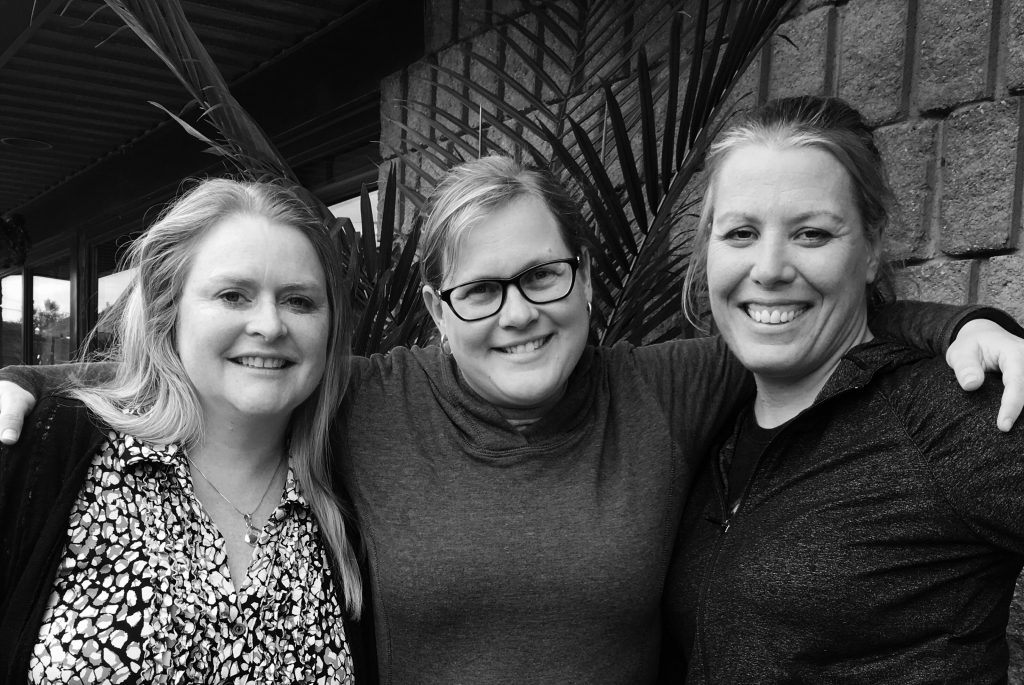For this project, teachers planned integrated social studies/language inquiry units whereby technology was used to “Capture the Learning” of students. ePortfolios were created for students in Grade 4 and Grade 7. The main goal of the project was to improve students’ ability to reflect on s thinking and learning. Tasks were designed in order to:
- Improve student engagement, achievement and self-awareness
- Make learning visible
- Improve assessment “as” and “for” learning
- Create a “Culture of Thinking”
- Collaborate with students and families
- Implement the new Social Studies Curriculum
- Integrate language and social studies
- Differentiate between instruction and assessment
Team Members
Josephine Stewart
Thames Valley District School Board
Charity Woodruff
Thames Valley District School Board
Danielle Bruyns
Thames Valley District School Board
Team Photo

Professional Learning Goals
- Improved student engagement, achievement and self-awareness
- Connected evidence and success criteria to learning goals and expectations
- Made learning visible
- Improved assessment “as” and “for” learning
- Used ePortfolios to capture student learning over time
- Created a “Culture of Thinking”
- Used technology to collaborate and redesign tasks
- Implemented the new Social Studies Curriculum
- Integrated language and social studies
- Further developed student problem-solving processes in which they can demonstrate “application” of learning in a variety of settings
- Differentiated between instruction and assessment
Activities and Resources
- Used collaborative tools to wonder and ask questions
- Used video to observe closely and describe learning (iPads)
- Captured and assessed learning using FreshGrade in combination with other technology
- Asked students to reflect on their learning using prompts and other metacognitive strategies
- Asked students to consider multiple perspectives and viewpoints in order to form informed conclusions
- Used Google Expeditions, Google Cardboard, Google Maps, Twitter, GAFE, Telegami and FreshGrade
- Asked students to communicate, connect, reason and explain their thinking
- Asked students to make connections
- Met with team members on an ongoing basis to collaborate and plan tasks
- Professional reading
Unexpected Challenges
- Our team rose to the challenge of fulfilling both the expectations of this project and the board’s increased focus on numeracy this year
- It took time to develop a comfort with FreshGrade as a sharing platform. Teachers needed to time to play with the features of FreshGrade before they became comfortable inviting students, and then parents/families to be part of the process. What content should be shared? What content is beneficial to share?
- Increased class size made for increased challenges in terms of access to technology and feedback/reflection time
- Connectivity, teacher learning, priorities and diverse classroom dynamics made it so that we were not able to reach out globally in the way that was originally intended. Our group plans to make this part of our next steps after this project is completed.
Enhancing Student Learning and Development
- Improved communication of learning
- Improved student planning
- Increased productivity, motivation and engagement
- Improved ability to self-monitor progress
- Improved understanding of success criteria and learning goals
- Improved willingness to revise and improve work in order to deepen understanding
- Improved questioning stance, which promoted thinking and problem-solving
- Improved use of technology to enhance learning
- Increased interest/engagement in social studies
Sharing
- Developed a Twitter PLN using the hashtag #capturethelearningNCPS to share our professional learning. We consolidated our Tweets using Storify for sharing purposes.
- Presented teacher learning to staff at a staff meeting
- Created a Teacher Tip Sheet for using FreshGrade
- Created a Parent Tip Sheet for using FreshGrade
Project Evaluation
Teacher learning from this project:
- The importance of student reflection for learning
- The importance of formative assessment for student learning
- The importance of having an authentic audience. Through student peer-to-peer reflection and student-parent reflection, students are more accountable for their learning.
- What apps are best for individual, group work and targeting specific learning goals? What is the best way to manage the use of technology?
- Benefits of collaboration: working in direct partnership with Instructional Coach and teacher-librarian on Google Expeditions/Cardboard and FreshGrade Reflections
- Planning with the end in mind using the essential question “What historical events helped to shape Canada?” Students used a value line to continually reassess their thinking throughout the unit about the big ideas.
- Professional learning on inquiry learning and assessment practices: SQ2R Feedback
- Professional learning around the use of technology during inquiry: Tellagami, FreshGrade, Flipgrid, Google Cardboard, QR Codes, DoInk, Google Expeditions, Google my Maps, Google Drawings, Google Slides, SOLE stations, Digital Documentation (Audio, Video)
Teacher Next Steps:
- Increased parent involvement
- Student use of documentation to set learning goals
- Increased global collaboration
- Increased time for students to act on feedback
- Dedicated space for documentation
Benefits for Student Learning:
- Increased engagement (e.g., increased time on task, students taking ownership through independent work at home)
- Improved ability to ask questions which was demonstrated by more in-depth questions in the lower right section of the Q-Chart
- Improved ability to make thinking visible via student contributions to Thinking Boards, Google Slideshows, Thought Books, Class Discussions, etc.
- Enhanced ability to reflect on thinking using the Thinking Continuum and Interactive Thought Boards
- Improved ability to understand different perspectives. Students were able to reflect on the significance of historical events evidenced by a change in student thinking on a value line. (Interactive Bulletin Board)
Resources Used
Assessment 3.0: Throw Out Your Grade Book and Inspire Learning by Mark Barnes
Strand A Early Societies Grade 4 Google Folder by Danielle Bruyns
https://drive.google.com/open?id=0B8_3_5wZedqsUF9yaDdOVDc5aTA
Strand A New France and British North America Grade 7 Google Folder by Charity Woodruff
https://drive.google.com/drive/folders/0B0tCEnHHizHNb0RJNTZLLVgtUmM?usp=copy
Storify of #capturethelearningNCPS on Twitter
FreshGrade Teacher Tip Sheet
https://docs.google.com/document/d/1kY2Dxuap34cus6z8FITvo-LGbv_bWQApZ7ly4UZwj4w/edit?usp=copy
FreshGrade Parent Tip Sheet
https://docs.google.com/document/d/1p_qaRCKhKPUrz3FDPC8SVDDa9P0LFVQAdkLUNg81cYs/edit?usp=copy
Resources Created
These resources will open in your browser in a new tab, or be downloaded to your computer.


